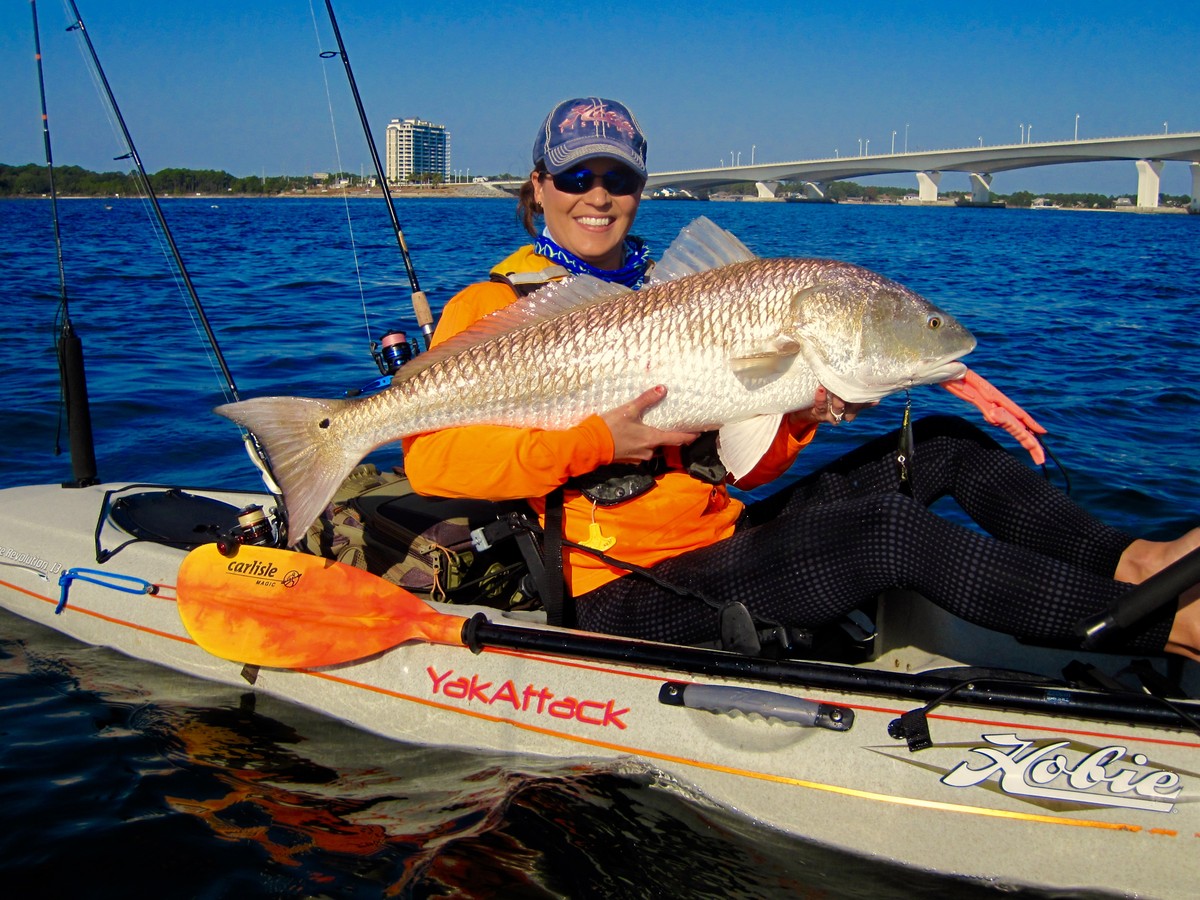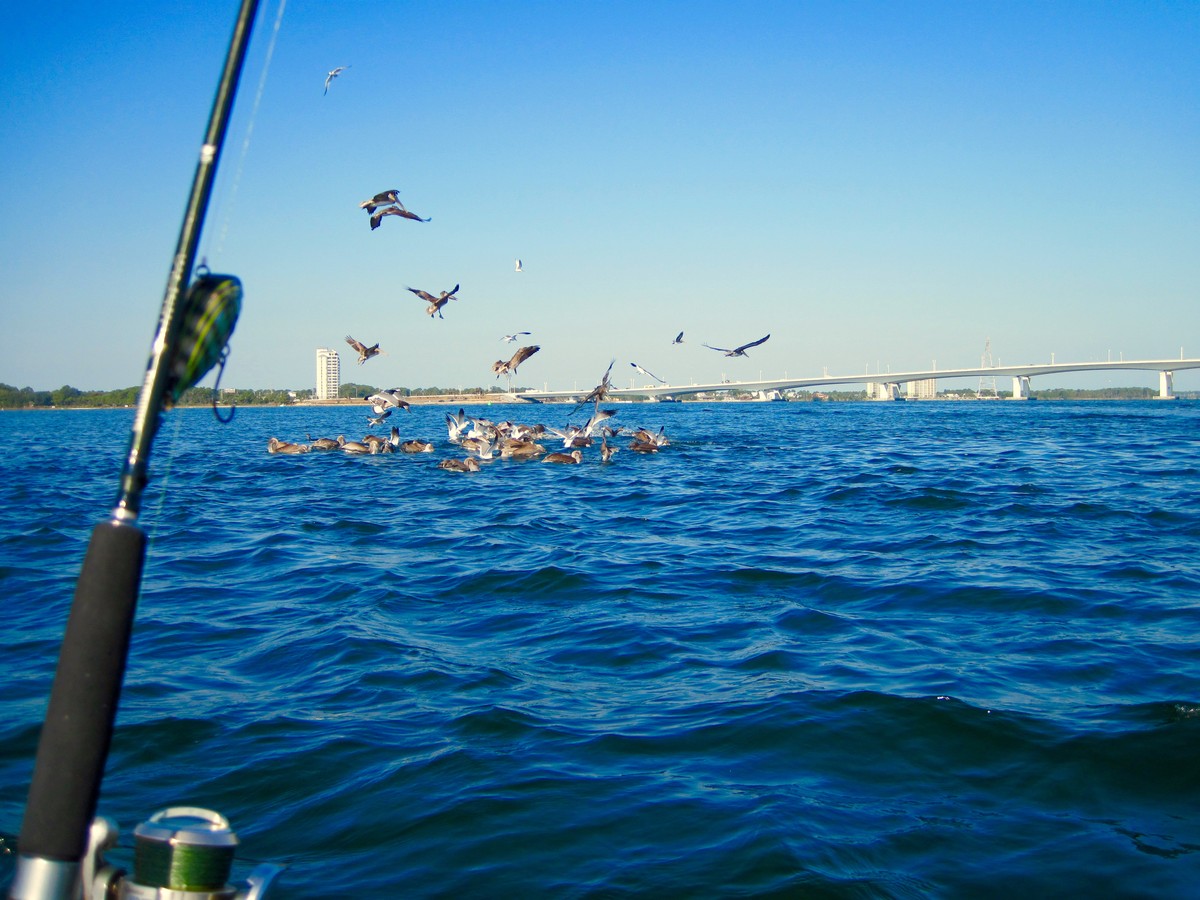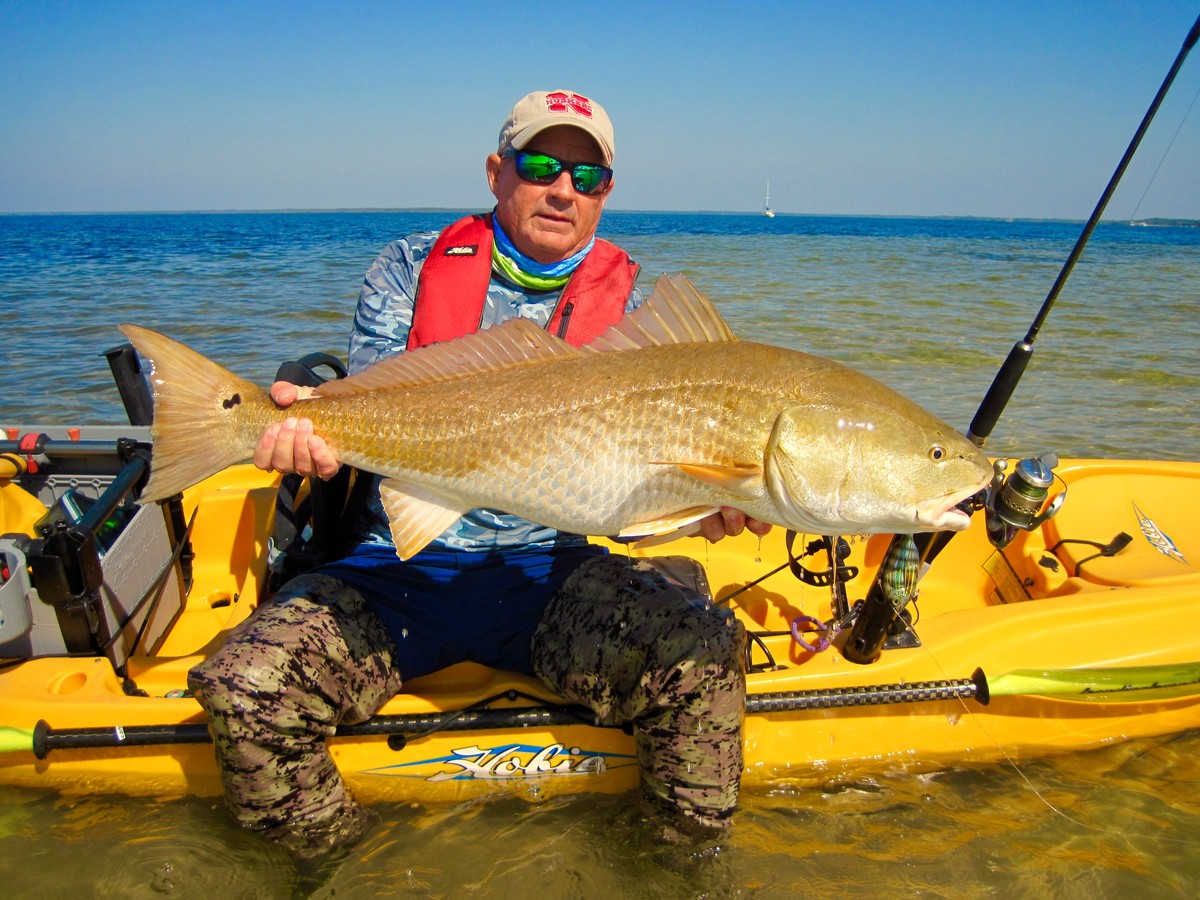
They’re here all year, but never so easy to find — or catch — as they are right now. Huge aggregations of redfish are impossible to miss, with swarms of dive-bombing pelicans, cormorants and gulls marking their locations around deeper inshore waters, passes and nearshore beaches — all easily accessible to kayakers.
Shorter days and falling water temperatures trigger the annual running of the bulls along the upper Gulf of Mexico. The big reds take advantage of schooling baitfish masses preparing to migrate offshore for the winter, the clear water often stained brown by an acre of terrified, tiny minnows.
RELATED: The Value of Invisibility
The redfish, of course, aren’t all technically “bulls.” The giant females need to fuel the approaching rigors of their fall spawning run. An adult female is capable of scattering a million eggs every three to five days in offshore Gulf waters, and that takes a lot of protein. Incoming tides propel the larvae back through Gulf passes, where they seek refuge from predators on nurturing shallow grassflats. A tiny percentage will survive the few years needed to reach the 30-inch range to join the rampaging herds of bulls.

There’s nothing sophisticated about catching these giants. Feeding fish force baitfish to the surface, exposing them to diving birds. At times, the reds will follow the bait up, incredible holes opening in the water; a red horde of marauding redfish fish is an awesome spectacle and incredible topwater or even fly target. If the fish are deep, virtually any lure that dives quickly virtually guarantees a hookup.
No need for a cooler. These redfish are all well beyond legal harvest size, with most in the 20- to 30-plus-pound range. Take care to release them in good shape. The cooler water temperatures and higher oxygen content of autumn all but guarantee survival given proper handling techniques.
Skip the live bait. If using plugs or spoons, replace trebles with single hooks; one big, strong single hook is all that’s needed. Never, ever hang the fish vertically by the lower jaw; if needed, take a quick picture with the fish supported horizontally, and get the exhausted fish back in the water as quickly as possible. One of the greatest attributes of a Hobie MirageDrive pedal-drive kayak is the ability to easily tow a tired fish alongside until it signals complete recovery.
Shown the proper respect, these tough fish can live 40 years, providing a thrill for generations of anglers.
